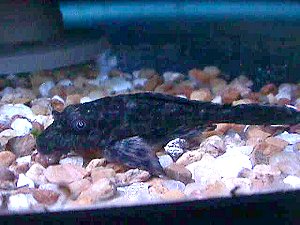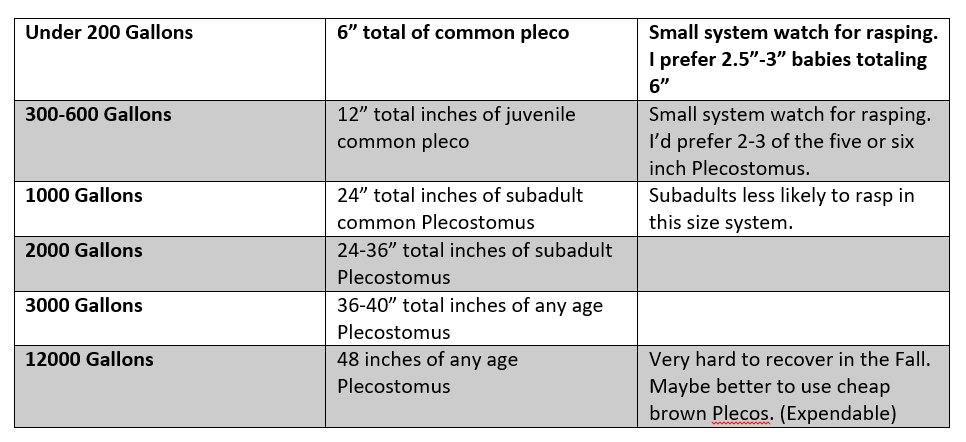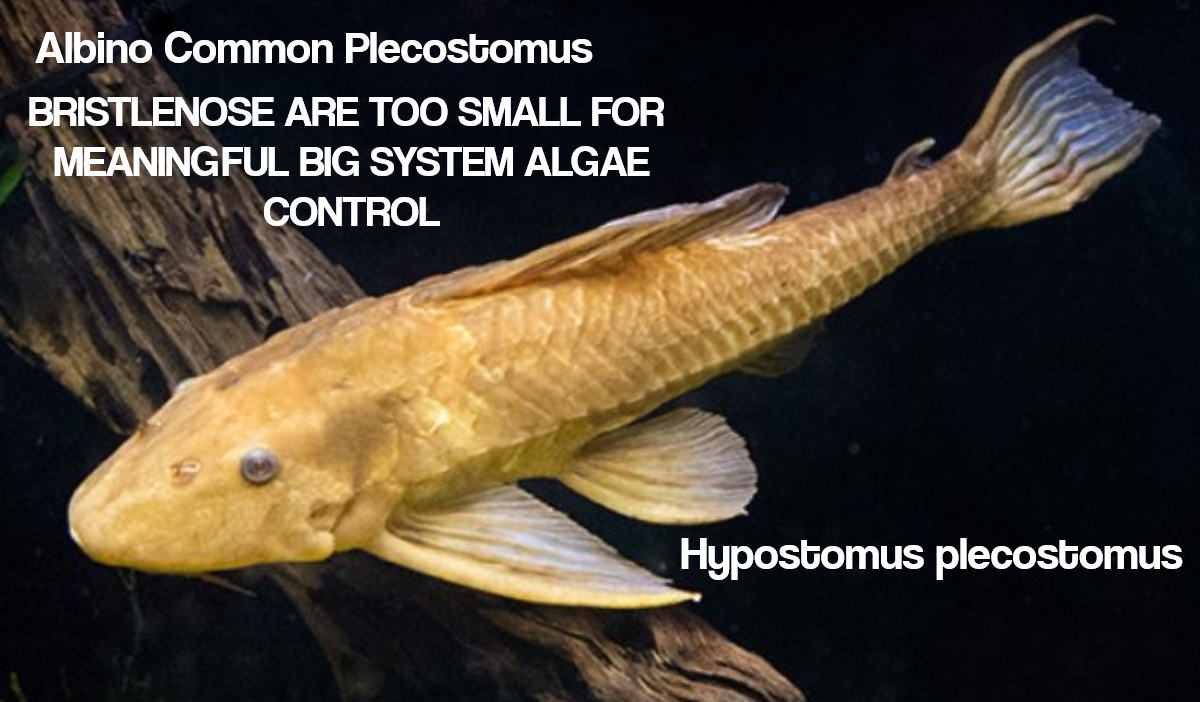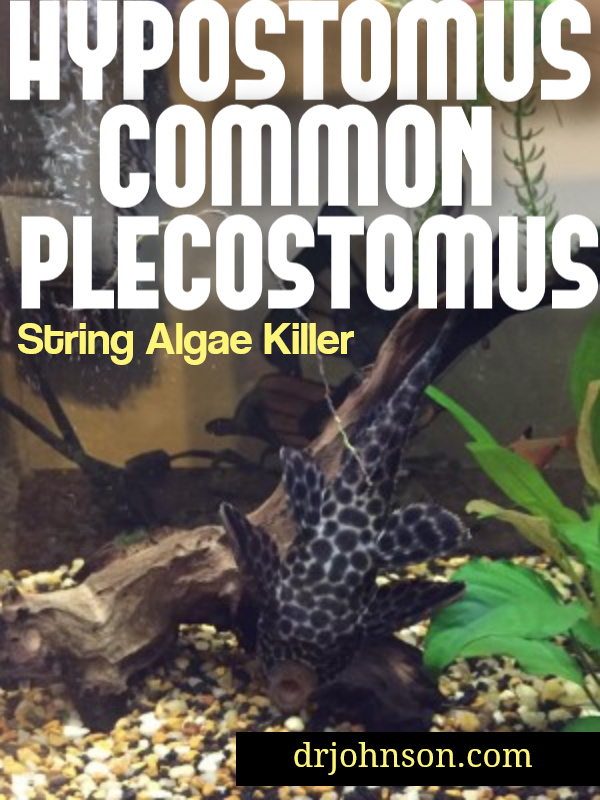I’ve seldom had a problem with String Algae Control because I rely on a Hypostomus (common) plecostomus or three to do my dirty work. They LOVE String algae and they can live in any water above 56 degrees. At 55 degrees, they just. flat. die.
Above 70 degrees they actively eat green algae to it’s roots and the common Hypostomus Plecostomus grow like weeds. The common plecostomus, called “Hypostomus Plecostomus” (not ancistrus not bristlenose) – grow OVER ONE INCH PER MONTH in large well lit facilities with unlimited algae to eat. *ON AVERAGE* a common plecostomus can grow to over a foot long in one season of 5-6 months in warm water with unlimited algae.

String algae happens to be their absolute favorite of all time. Bar none. I used to roll it up on a stick and even bring it inside to the plecos I had in my fish tank.
Bristlenose Plecostomus stay small and are trash at eating enough string algae to really matter. If there are whiskers on the Plecostomus you’re looking at, KEEP looking. That’s not a common ‘hypostomus’ plecostomus.
In winter, in their overwinter trash can, they eat Algae Wafers, and Zucchini, but let me back track:

So there’s this ugly tropical algae eater called “the Plecostomus” that actually LOVES algae and eats it CONSTANTLY day and night. I started using them 10 years ago. The ONLY string algae they can’t get is the stuff they can’t get, namely the waterfall, upstreambed or above the waterline.
I traditionally use two plecostomus. In large ponds like twelve THOUSAND gallons I buy two of the bigger ones. In ponds like 2 or 3 thousand gallons I use two of the six inch ones. Baby common plecos are better in the much smaller ponds….. A five inch plecostomus is starting to come into it’s stride. My favorite for starters.
TWO? Why two? Because it’s all you need. Try it, and call me a liar. Pundits who have NOT tried it already do.
By the end of any growing season on unlimited string algae the plecostomus will be over a foot long. And they die summarily at 55 degrees. Not 56, but 55.

A word of warning:
Plecostomus are occasionally aggressive in very small facilities. I personally would NOT recommend a pair of plecostomus in less than 600 gallons unless at or under 5″ small. Slow moving fish like Goldfish may pay a dear price if they are pinned and grated by the Plecostomus for it’s delicious slime coat and scales. Discus and Angelfish would also be considered ‘delectable’ once the algae is gone from the system. In larger systems these fish can elude and escape the Plecostomus but in systems at or under 300 gallons there’s a risk.
A Telescope goldfish was rasped completely scaleless and died from its wounds from a small plecostomus in a 55 gallon aquarium. I have only seen this ONCE in a very small tank with Koi, and only one Koi was affected. It would seem, Koi are faster and more wily than Goldfish.
Given a choice, the Plecostomus would eat the effortless string and carpet algae than chase around mobile food. Remember they also feed all night long so a sleeping fat fish is possibly the biggest risk.
For Koi ponds? FANTASTIC
Why Albino Hypostomus Plecostomus? Simple. You can see them against the bottom in the Fall when it’s time to bring them indoors. They’re worth a lot of money when they’re big (The albinos are) — and you can keep any of the common plecostomus in a trashcan with an airstone and an XXL sponge filter – feeding a little Zuchini and Algae Wafers through the winter.







